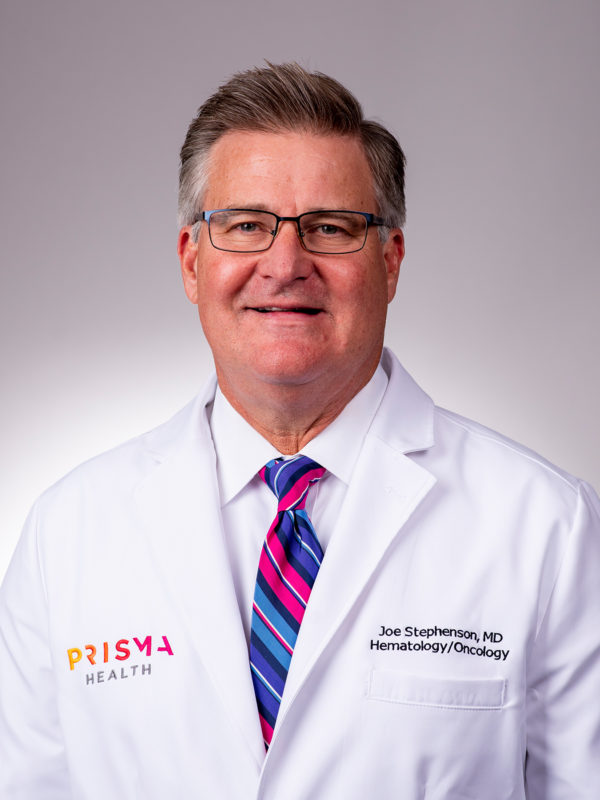How to know if you’re at high risk for breast cancer – and what to do about it
Just being a woman puts a person at higher risk for getting breast cancer, but there are other factors many people don’t know about. Medical oncologist Joe Stephenson, MD, spoke about how to know if you’re at high risk for breast cancer and what steps you can take to lower that risk.
What factors put you at higher risk for breast cancer?
Several factors are used to determine breast cancer risk, including:
- Family history. A woman’s risk increases if she has a mother, sister or daughter (a first-degree relative) or multiple family members who’ve had breast or ovarian cancer.
- Genetics. People who have a known genetic mutation, such as BRCA1 and BRCA2, are at higher risk for breast cancer. There are other genes in addition to BRCA genes that have been identified to increase the risk of breast cancer as well as other cancers. It is important to know your family history. If your mom or dad has a genetic mutation, you have a 50% chance of inheriting that gene mutation, which can increase the risk of cancer. It is important to know, however, that only 5–10% of breast cancer is related to genetic predisposition.
- Age. Women in their late 50s and early 60s are at higher risk. Age is the biggest risk factor that you cannot change or modify.
- Having dense breasts. Nearly 50% of the women in the United States have dense breast tissue. Find more dense breast facts here.
- Obesity and elevated BMI. Women who are obese have elevated estrogen levels, which can increase breast cancer risk. Being overweight or obese after menopause increases the risk of breast cancer even more. Also, women who are overweight tend to have higher insulin resistance, which also increases breast cancer risk.
- Taking hormones. Some forms of hormone replacement therapy (HRT) can raise the risk for breast cancer when taken for more than five years. Combined HRT with estrogen and progesterone slightly increases the risk of breast cancer, and this increased risk gets higher the longer HRT is used. When HRT is stopped, the increased risk goes down over time. The amount of time it takes to go down increases the longer HRT is used.
What can you do if you think you’re at high risk for breast cancer?
Dr. Stephenson said getting a mammogram is the best first step. Annual screening mammograms are recommended for all women aged 40 and older. In addition to detecting breast cancer early, mammograms can determine whether a woman has dense breasts, which is an important risk factor for breast cancer.
“According to South Carolina state law, patients who have dense breast tissue are notified so they can have a discussion with their gynecologist or primary care provider regarding their elevated risk for breast cancer,” Dr. Stephenson said. “That may then turn into a broader discussion about what we can do to further define their risk.”
One of the tools used to further define breast cancer risk is the Gail score, or Breast Cancer Risk Assessment Tool, which involves asking patients questions such as their prior history of biopsies, family history of breast cancer, as well as age at first menstrual period and number of pregnancies.
“The answers to these questions help calculate a five-year and lifetime risk of developing breast cancer,” Dr. Stephenson said. “The questions are asked at the time of mammogram to calculate each woman’s risk, and the risk percentage is printed on the mammogram for the patient and the patient’s provider to see. If the threshold is met or exceeded, the patient can be considered for referral to a high-risk breast cancer program.”
Through a high-risk breast cancer program, patients may be offered a medication to take for five years to reduce their risk, referred for a breast MRI, receive recommendations to reduce risk in their lifestyle and habits, and referred to a genetic counselor to discuss genetic testing options and recommendations.
“Our goal is to reduce the patient’s risk of developing breast cancer,” Dr. Stephenson said.
When is genetic testing for breast cancer risk considered?
Genetic testing is offered to patients who meet national criteria for high risk based on if they have Ashkenazi Jewish heritage, as well as a personal or family history of cancer.
“Genetic testing continues to evolve and broaden,” Dr. Stephenson said. “In addition to searching for the BRCA1 and BRCA2 genes, which is linked to inherited breast cancer, we’re searching for CHEK2, PALB2 and ATM genes. We now know how these genes impact risk of other cancers in addition to breast cancer. And so, if your first-degree relative has a history of breast, pancreatic, ovarian or metastatic prostate cancer, then you are eligible to be checked for breast cancer mutation.”
Once your breast cancer risk has been identified, steps can be taken to reduce risk and possibly prevent breast cancer from developing.
What can be done to reduce breast cancer risk?
Dr. Stephenson said lifestyle changes can reduce breast cancer risk, including being more physically active, eating healthy, and avoiding alcohol. Patients can also consider medicinal intervention, like tamoxifen or aromatase inhibitors for five years.
“By taking these steps, risk reduction can be as much as 50%,” Dr. Stephenson said. “The corollary I like to use is cholesterol medication. A lot of people take cholesterol medications to reduce the risk of developing heart disease or coronary artery event. And yet that risk reduction is around 9% or 10%. This is about a 50% reduction in risk of developing breast cancer.”
Is a cure for breast cancer possible?
“There are many types of breast cancer, and I don’t know that we’ll ever get to a point where we can prevent or eradicate all of them,” Dr. Stephenson said, “but I certainly think we can drop it significantly in terms of incidence rate in the population. About 15–20% of all breast cancer is probably going to be with us indefinitely, but I think we can significantly reduce the other 80–85%.”
Schedule your mammogram
To accommodate your busy schedule, many of our Breast Health Center locations offer early morning and late afternoon hours for breast imaging procedures. No physician referral is needed.
Schedule a Mammogram

